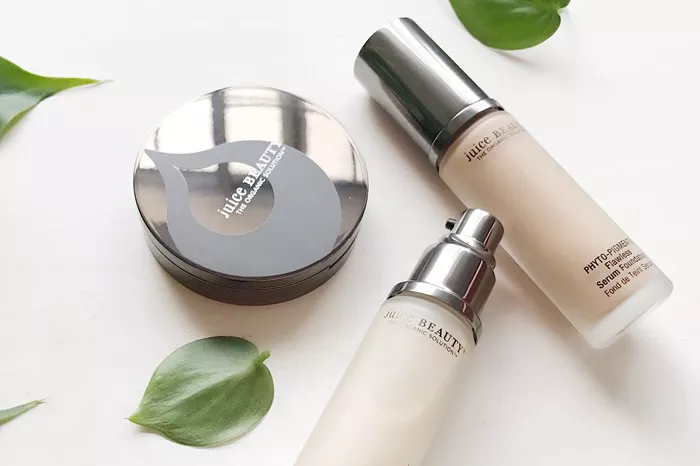Bumpy skin is when the surface of the skin feels rough, uneven, or textured. It may look like small pimples or patches. Bumpy skin can appear on the face, arms, thighs, or back. It is usually not harmful but can make people feel self-conscious.
Common Types of Bumpy Skin
Here are some common types of bumpy skin:
- Keratosis Pilaris: Tiny bumps on the upper arms, thighs, or cheeks. These look like goosebumps.
- Acne: Whiteheads, blackheads, and pimples can cause bumpy texture.
- Clogged Pores: When oil and dead skin block pores, bumps form.
- Allergic Reactions: Sometimes bumps come from irritation or allergies.
- Dry Patches: Dry skin can feel rough and uneven.
Main Causes of Bumpy Skin
Bumpy skin can happen for many reasons. Knowing the cause helps in choosing the right treatment.
1. Dead Skin Buildup
When dead skin cells are not removed, they can collect on the skin. This leads to a rough texture.
2. Excess Oil Production
Oily skin can trap dirt and dead skin. This causes clogged pores and bumps.
3. Dehydrated Skin
When the skin lacks moisture, it feels tight and bumpy. Hydration is key for smooth skin.
4. Poor Skin Care Habits
Using harsh soaps or skipping cleansing can worsen texture. Wrong products may also trigger bumps.
5. Genetics and Hormones
Some people are born with bumpy skin. Hormonal changes in teens or during menstruation can make it worse.
How to Treat Bumpy Skin
The good news is that bumpy skin can be improved. Here are steps to smooth and soften your skin.
1. Gentle Cleansing
Use a mild cleanser twice daily. Avoid soaps with alcohol or fragrance. Clean skin helps prevent clogged pores.
2. Exfoliate Regularly
Exfoliation removes dead skin cells. This improves skin texture over time. Use gentle scrubs or chemical exfoliants like:
- AHAs: Glycolic acid and lactic acid work well for dry or sensitive skin.
- BHAs: Salicylic acid is great for oily or acne-prone skin.
Exfoliate 1 to 3 times a week based on your skin type.
3. Moisturize Daily
Moisturizing keeps the skin soft and hydrated. Look for ingredients like:
- Hyaluronic acid
- Ceramides
- Glycerin
- Urea for very rough skin
Apply moisturizer after cleansing to lock in moisture.
4. Try Targeted Serums
Serums with active ingredients can smooth skin faster. Good options include:
- Niacinamide – calms the skin and reduces redness
- Vitamin C – brightens and improves texture
- Retinoids – encourage skin renewal and reduce bumps
5. Use Sunscreen Daily
Sun damage makes bumpy skin worse. Wear SPF 30 or higher every day. Even cloudy days need protection.
6. Avoid Harsh Products
Don’t use alcohol-heavy toners or strong scrubs. These can damage the skin barrier and increase roughness.
Home Remedies for Bumpy Skin
Natural ingredients can also help smooth your skin.
Oatmeal Mask
Oatmeal calms and softens irritated skin. Mix with honey and apply for 15 minutes before rinsing.
Aloe Vera
Aloe soothes bumps and hydrates. Use fresh aloe or a pure gel version.
Coconut Oil
This works for dry, rough patches. It helps lock in moisture but avoid it if you have acne-prone skin.
Skin Care Routine for Bumpy Skin
A simple and consistent routine is the key. Here’s a sample routine:
Morning
- Gentle cleanser
- Niacinamide or vitamin C serum
- Light moisturizer
- Sunscreen SPF 30+
Evening
- Cleanser
- Exfoliant (2–3 times a week)
- Hydrating serum or retinol (if skin tolerates it)
- Rich moisturizer
When to See a Dermatologist
If bumpy skin does not improve with care, see a professional. A dermatologist can give stronger treatments like chemical peels, prescription creams, or laser therapy.
Tips for Preventing Bumpy Skin
- Stay hydrated by drinking enough water.
- Use non-comedogenic (won’t clog pores) products.
- Don’t pick or scratch your skin.
- Shower after sweating to keep pores clean.
- Wash pillowcases and towels often.
Ingredients to Look For
Certain ingredients are proven to help with texture. Look for products containing:
- Salicylic acid
- Glycolic acid
- Retinol or adapalene
- Lactic acid
- Niacinamide
What to Avoid with Bumpy Skin
Avoid these habits and ingredients to prevent irritation:
- Over-exfoliating
- Skipping sunscreen
- Heavy makeup that clogs pores
- Using expired skin care products
Myths About Bumpy Skin
Myth 1: Scrubbing Hard Will Smooth Skin
Scrubbing too hard damages skin and makes it worse. Always exfoliate gently.
Myth 2: Bumpy Skin Is Always Acne
Not all bumps are acne. Some may be keratosis pilaris or allergies.
Myth 3: You Should Skip Moisturizer If You Have Oily Bumps
Oily skin still needs moisture. Use a gel or oil-free moisturizer.
Consistency Is Key
Skin takes time to change. Be patient. Stick with your routine for at least 6–8 weeks to see results.
Best Products for Bumpy Skin
Look for simple, dermatologist-recommended brands. Choose products that say “non-comedogenic” or “for sensitive skin.” Patch test any new item before full use.
Skin-Friendly Lifestyle Tips
- Eat a balanced diet rich in antioxidants and omega-3s.
- Get enough sleep every night.
- Exercise to increase blood flow and skin health.
- Manage stress with meditation or hobbies.
Conclusion
Bumpy skin is common and treatable. With the right care and patience, your skin can become smoother and healthier. Focus on gentle cleansing, proper exfoliation, and daily moisturizing. Use sunscreen every day and avoid harsh products. A consistent skin care routine and healthy habits will bring the best results.

